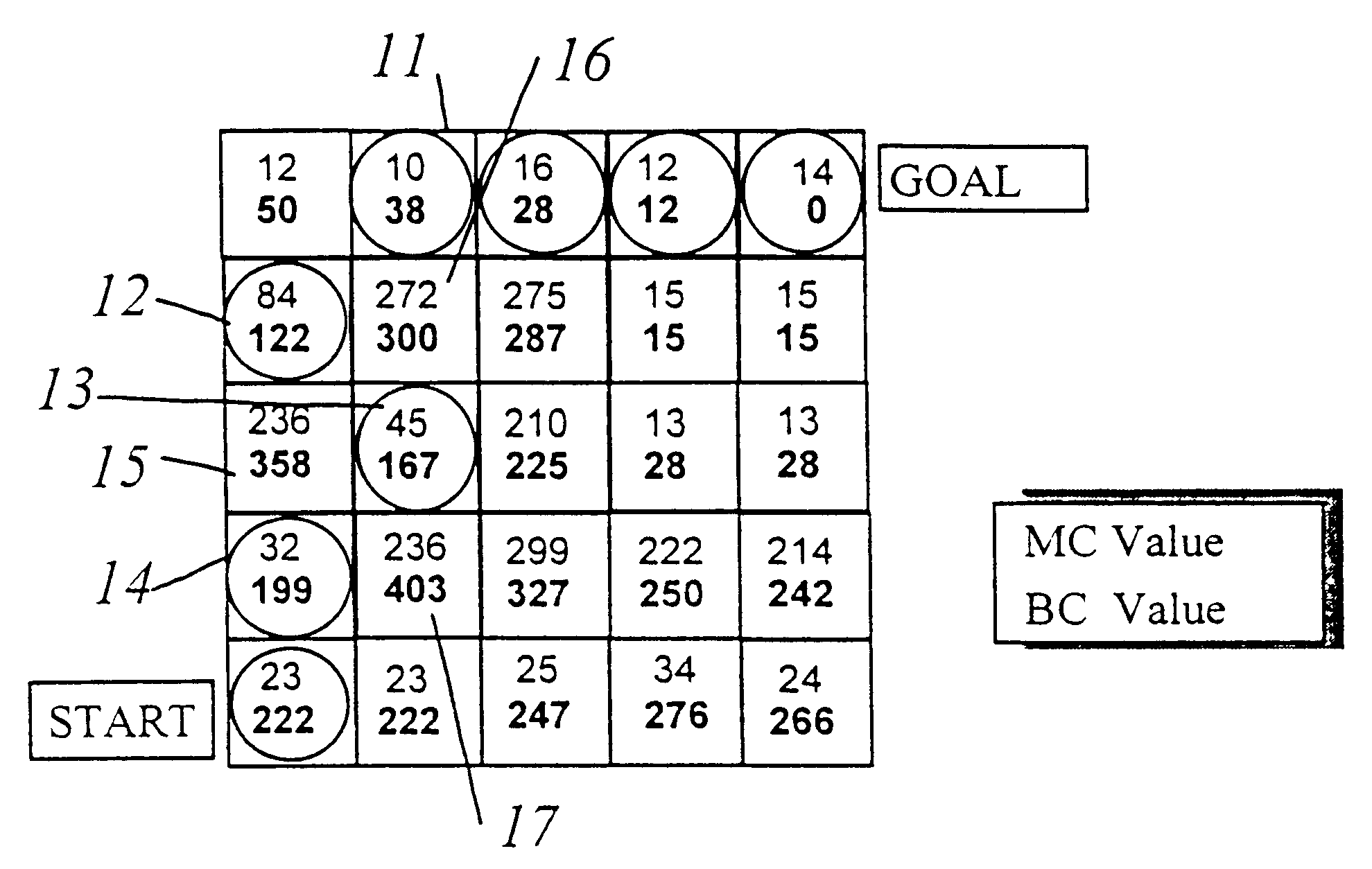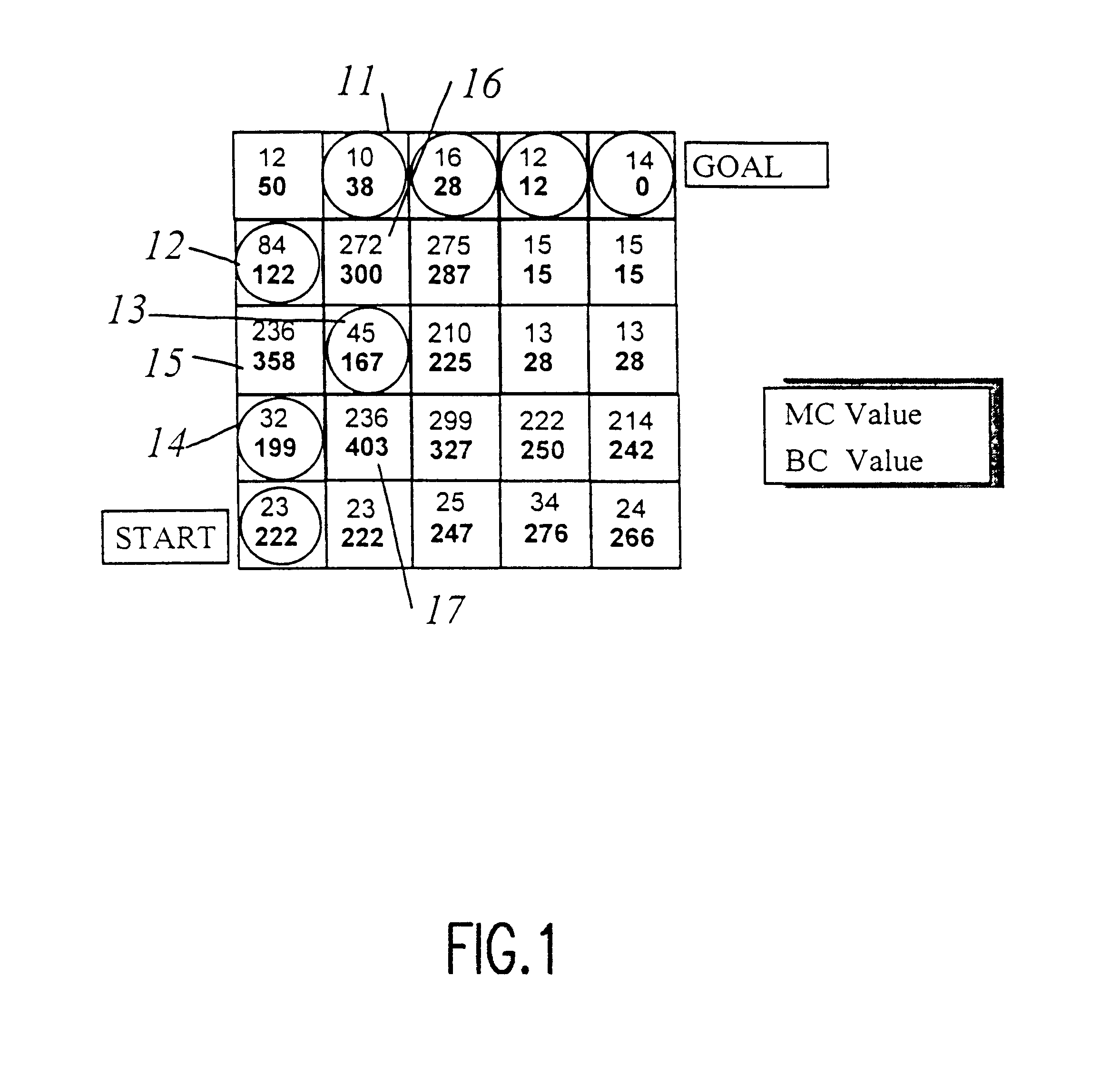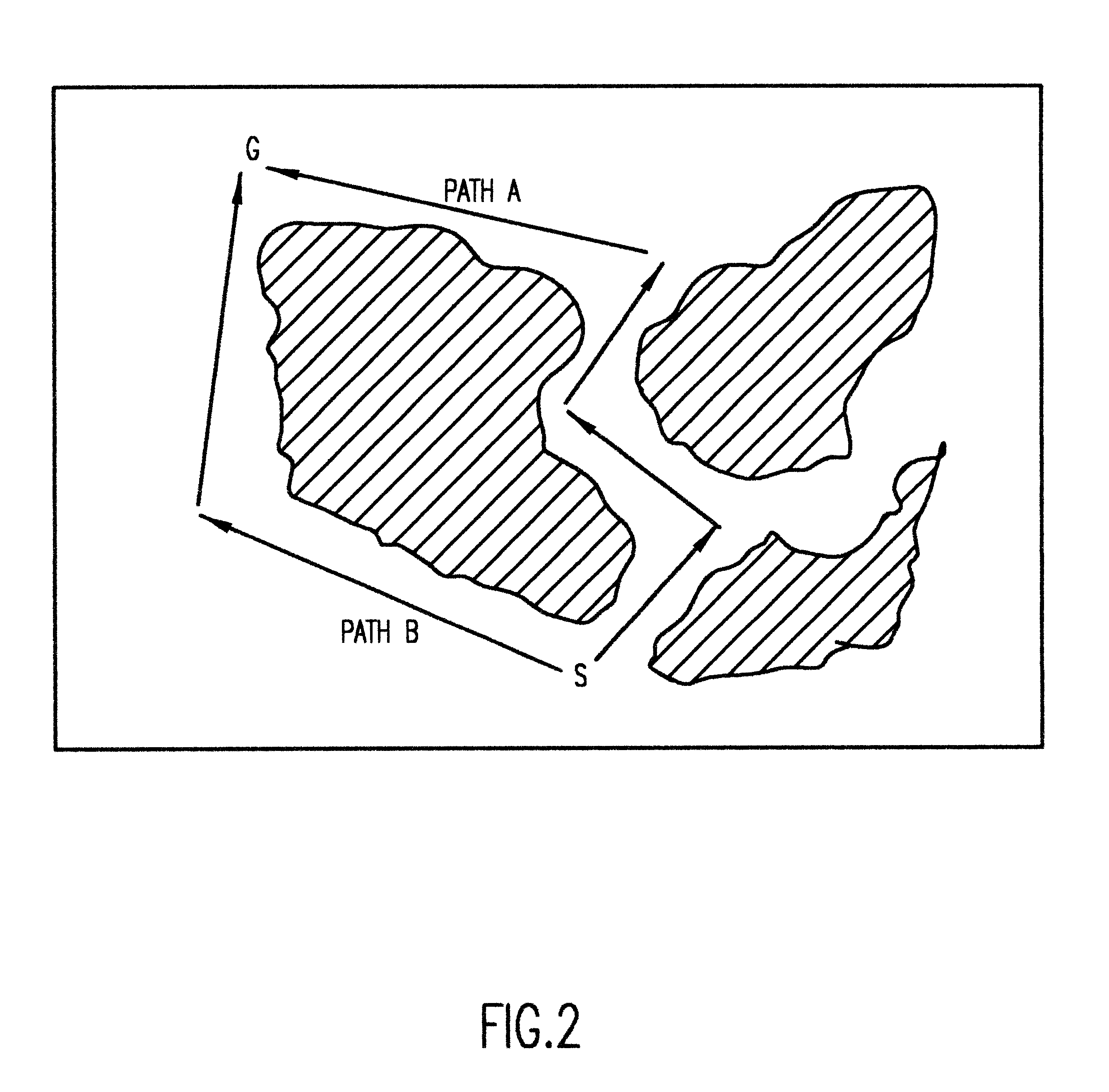Real-time mission adaptable route planner
a real-time mission and planner technology, applied in the direction of navigation instruments, instruments, energy saving arrangements, etc., can solve the problems of increasing the likelihood of human error in planning by a navigator including responses to changes in conditions or circumstances, and the inability of highly trained navigators to assimilate the amount of information which may be available,
- Summary
- Abstract
- Description
- Claims
- Application Information
AI Technical Summary
Benefits of technology
Problems solved by technology
Method used
Image
Examples
Embodiment Construction
Referring now to the drawings, and more particularly to FIG. 1, there is shown a graphical depiction of a grid-based methodology for finding a solution to an optimization problem such as a route plan to which the invention is preferably applied, possibly with variations which will be evident to those skilled in the art in light of the following description of the invention. Many such grid-based methodologies are known and some may duplicate the results illustrated in FIG. 1. By the same token, the methodology depicted in FIG. 1 is performed initially to provide inputs for the system and remainder of the methodology of the invention and other grid-based systems presently known may be equally suitable for that limited purpose within the context of the invention. However, it is to be understood that FIG. 1 depicts a preferred methodology for developing input information for the system and methodology in accordance with the invention and the inclusion of a grid-based system forms a part...
PUM
 Login to View More
Login to View More Abstract
Description
Claims
Application Information
 Login to View More
Login to View More - R&D
- Intellectual Property
- Life Sciences
- Materials
- Tech Scout
- Unparalleled Data Quality
- Higher Quality Content
- 60% Fewer Hallucinations
Browse by: Latest US Patents, China's latest patents, Technical Efficacy Thesaurus, Application Domain, Technology Topic, Popular Technical Reports.
© 2025 PatSnap. All rights reserved.Legal|Privacy policy|Modern Slavery Act Transparency Statement|Sitemap|About US| Contact US: help@patsnap.com



